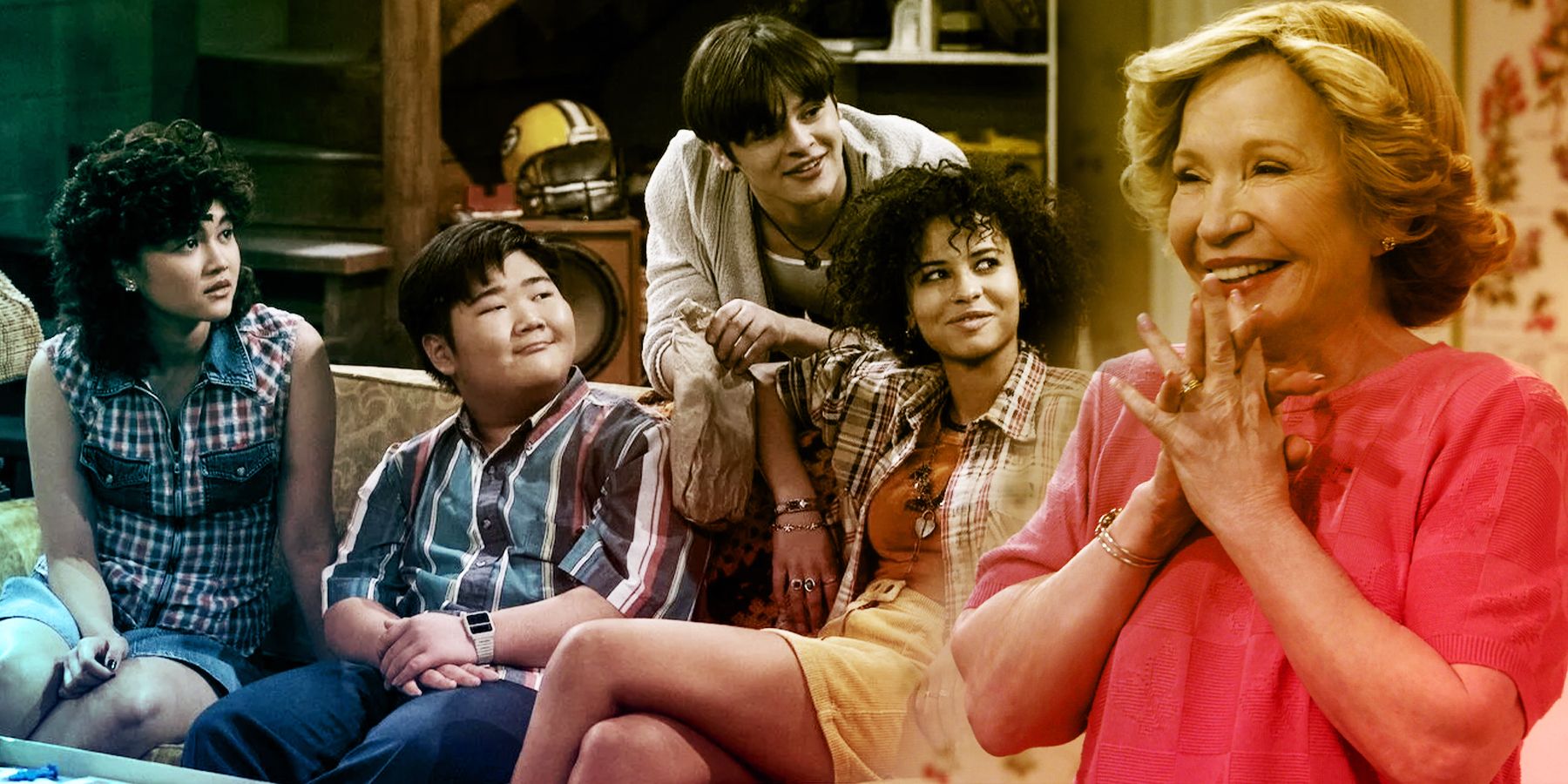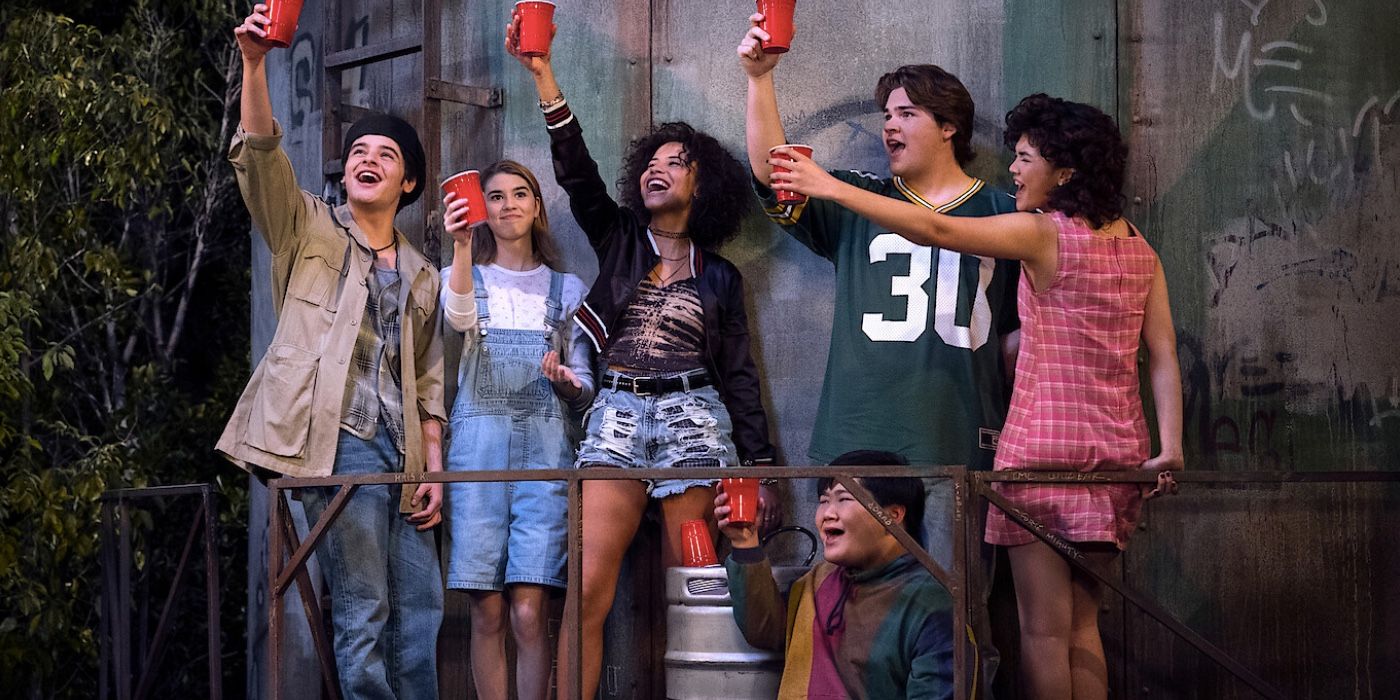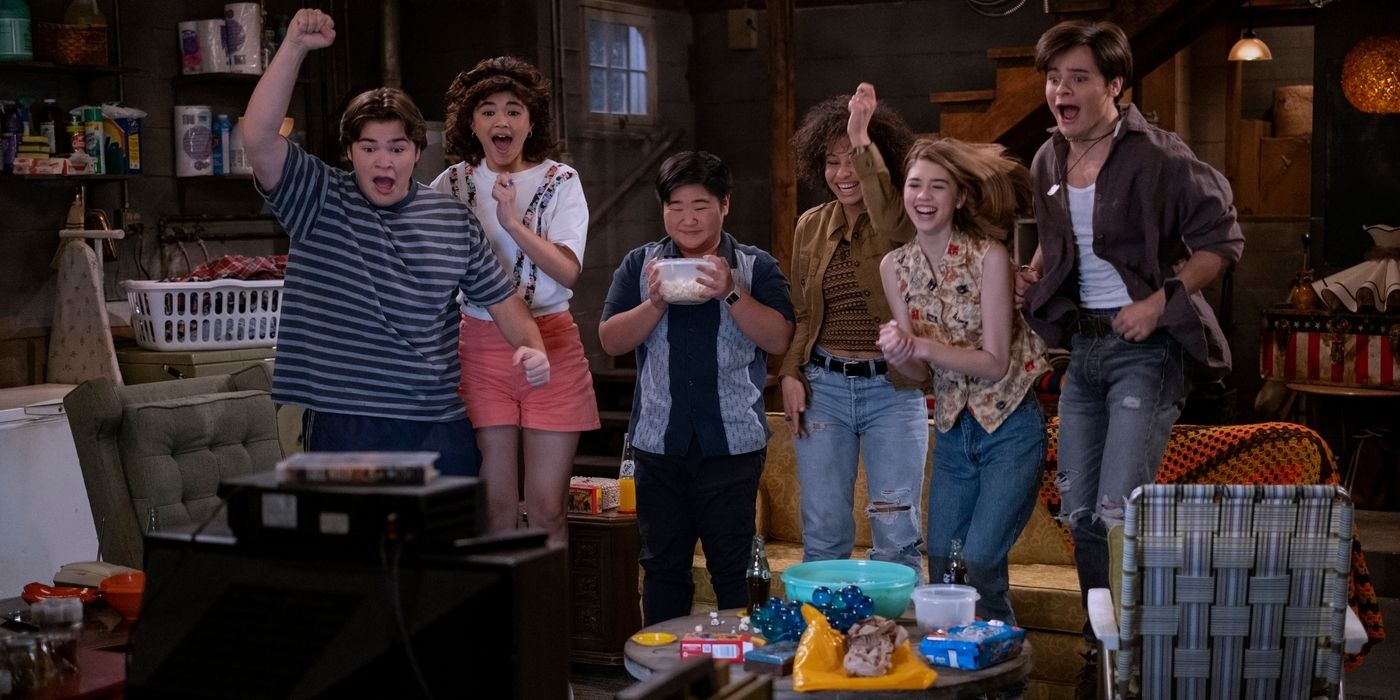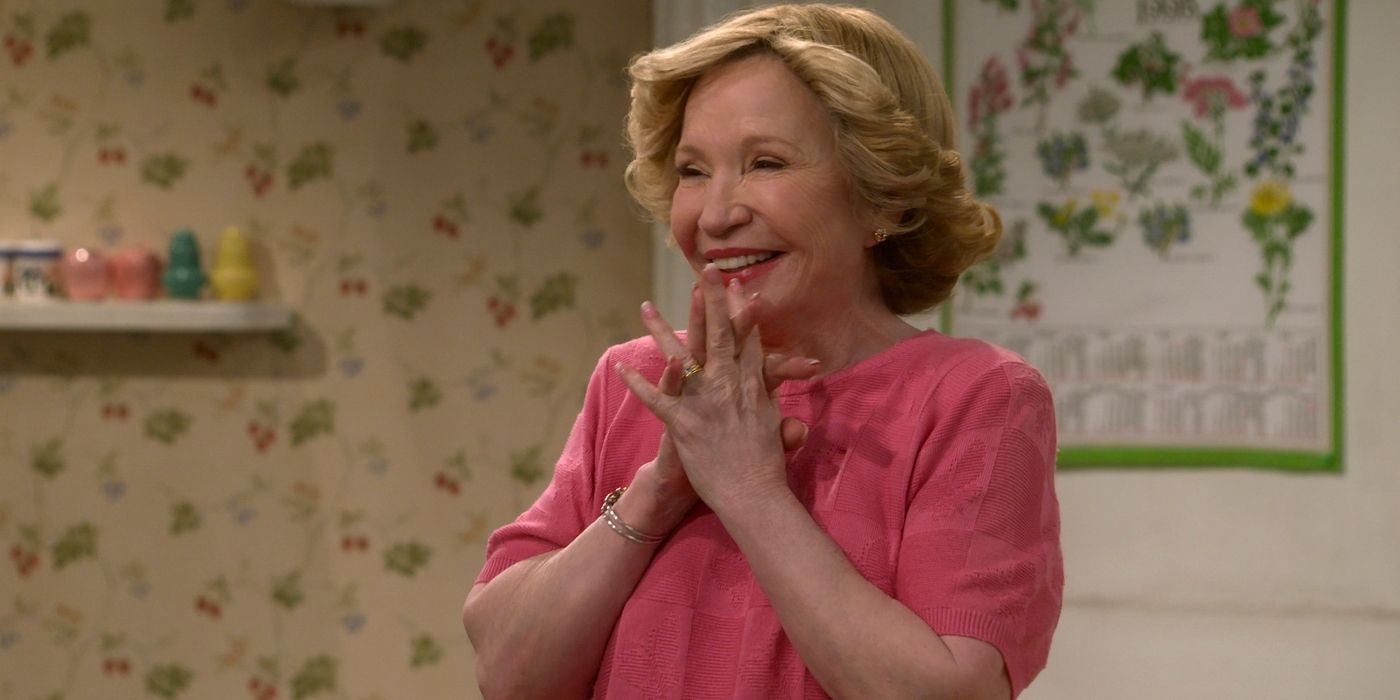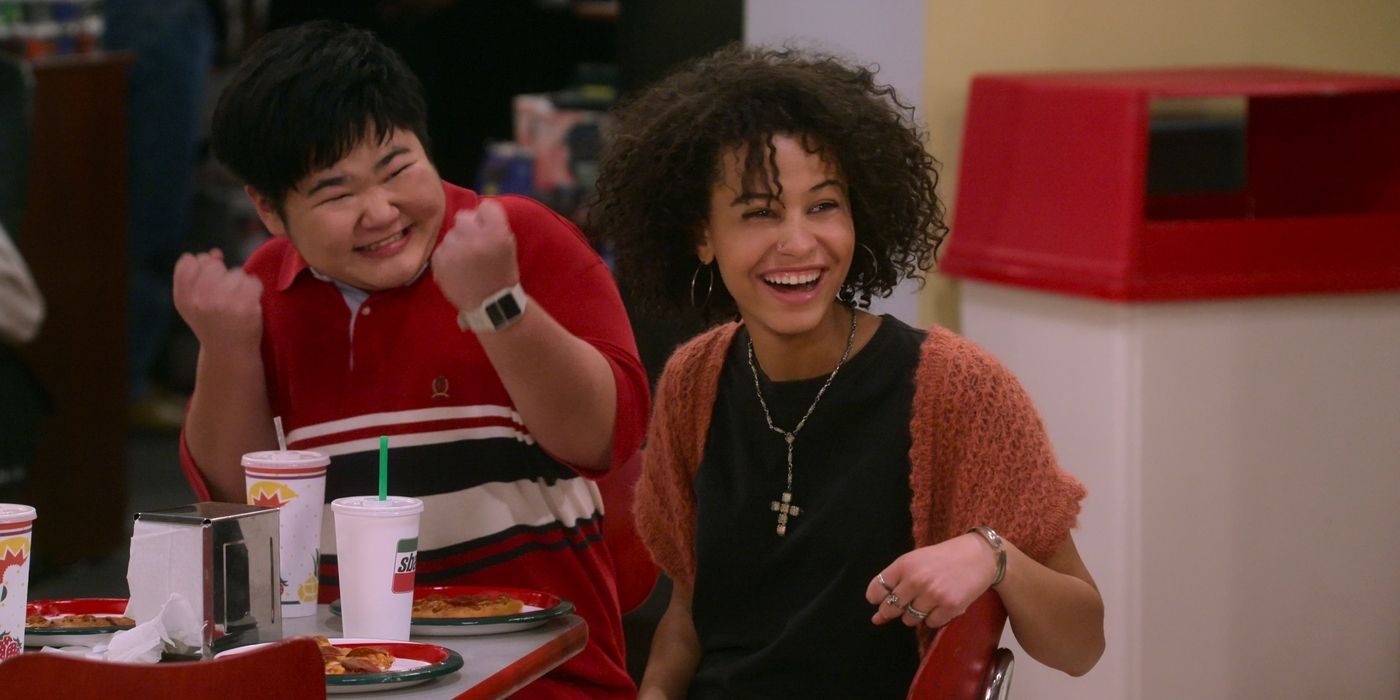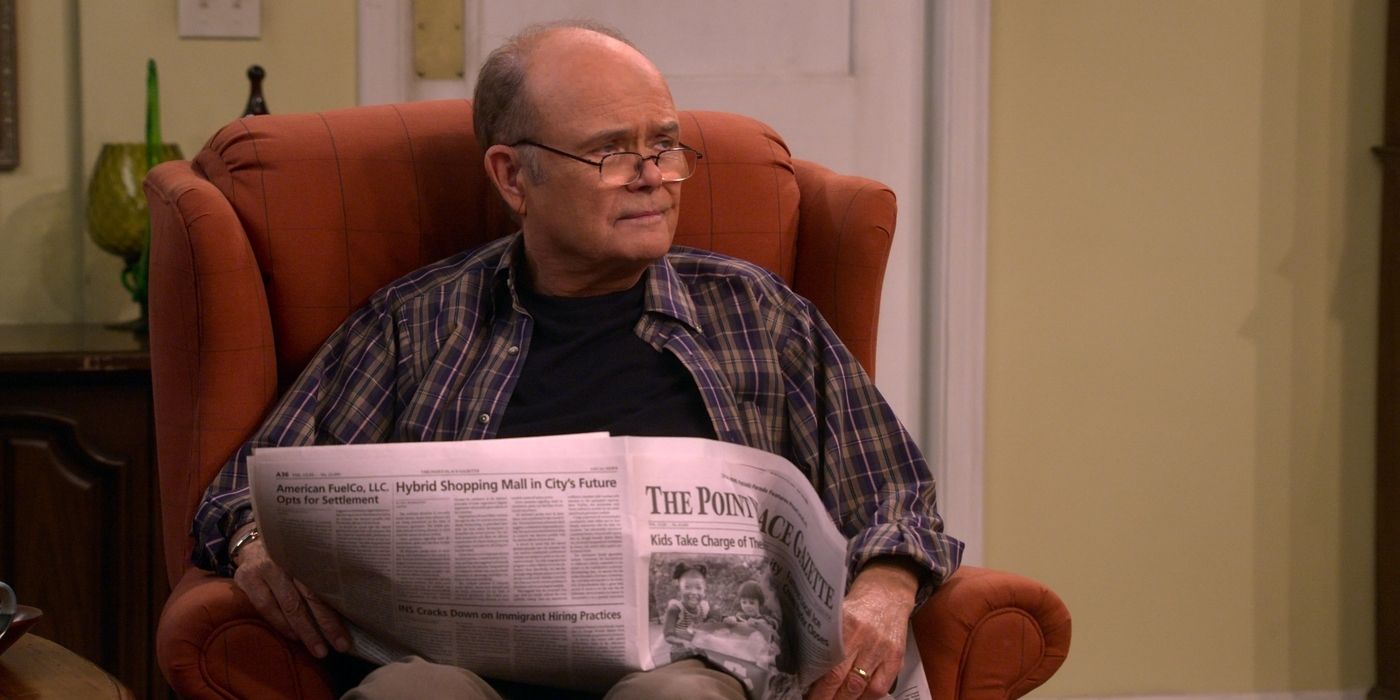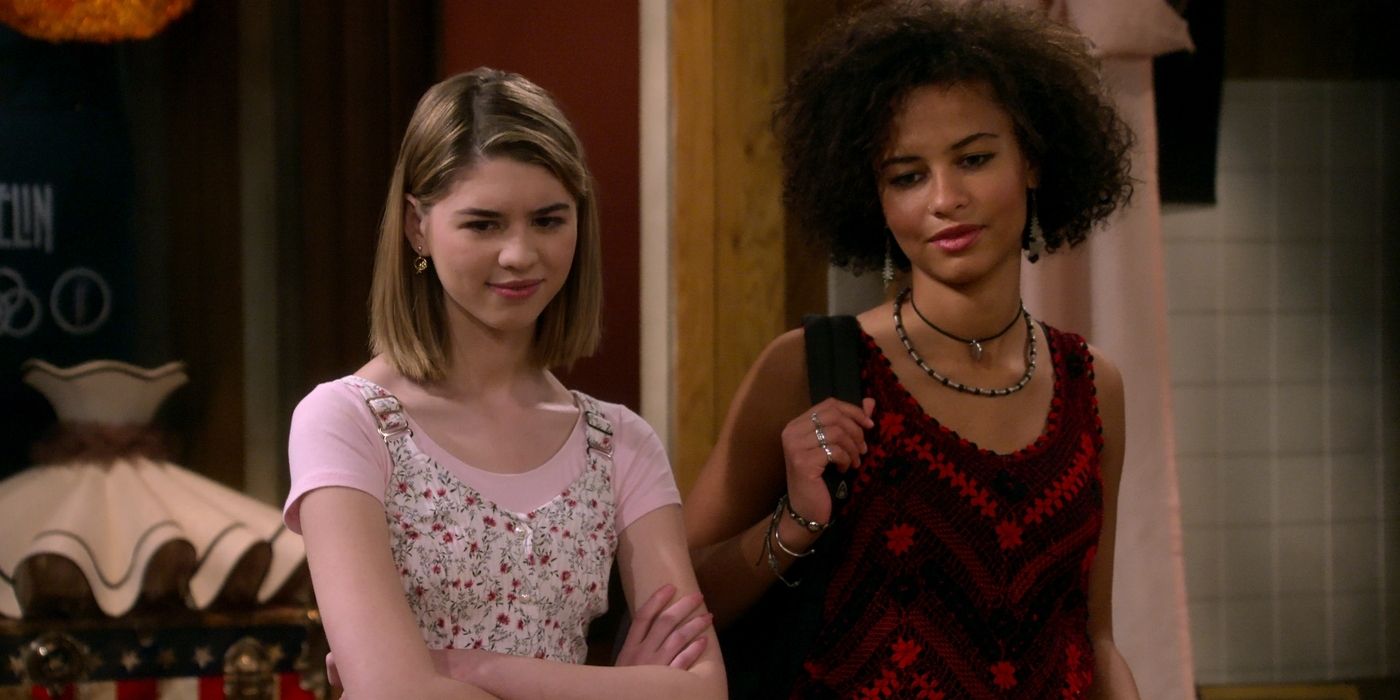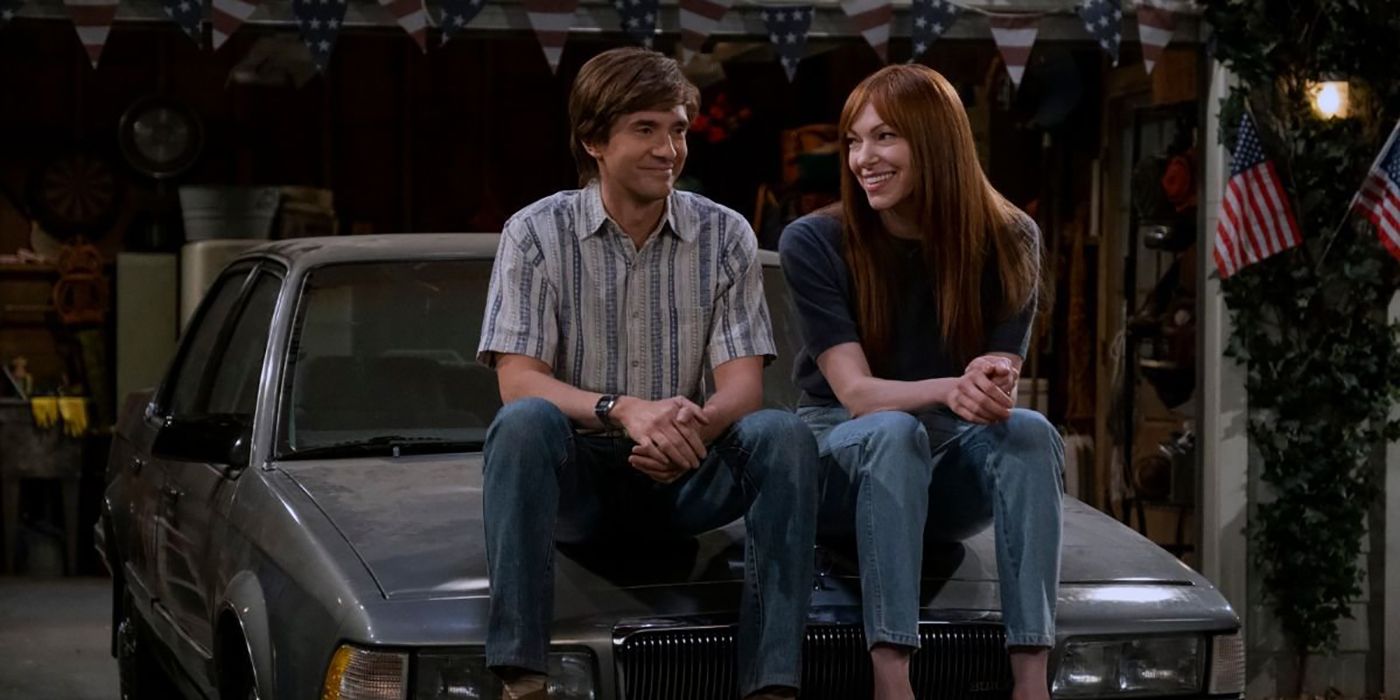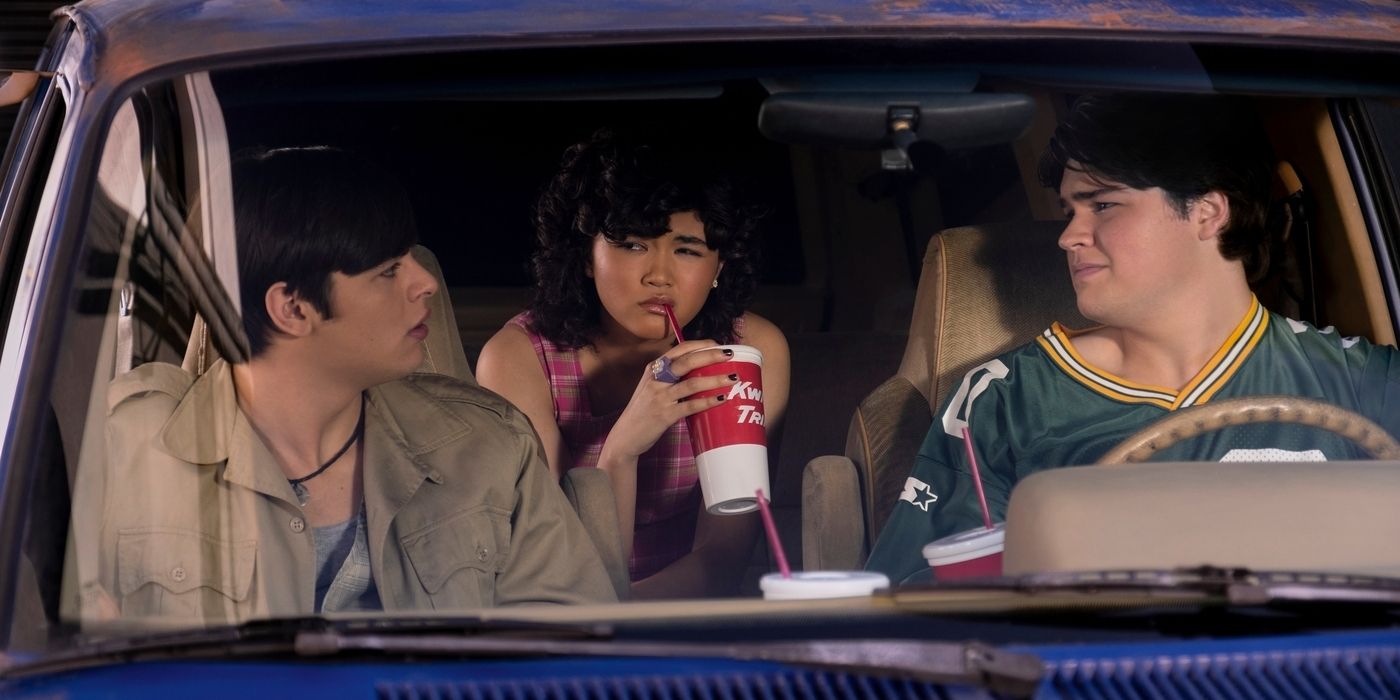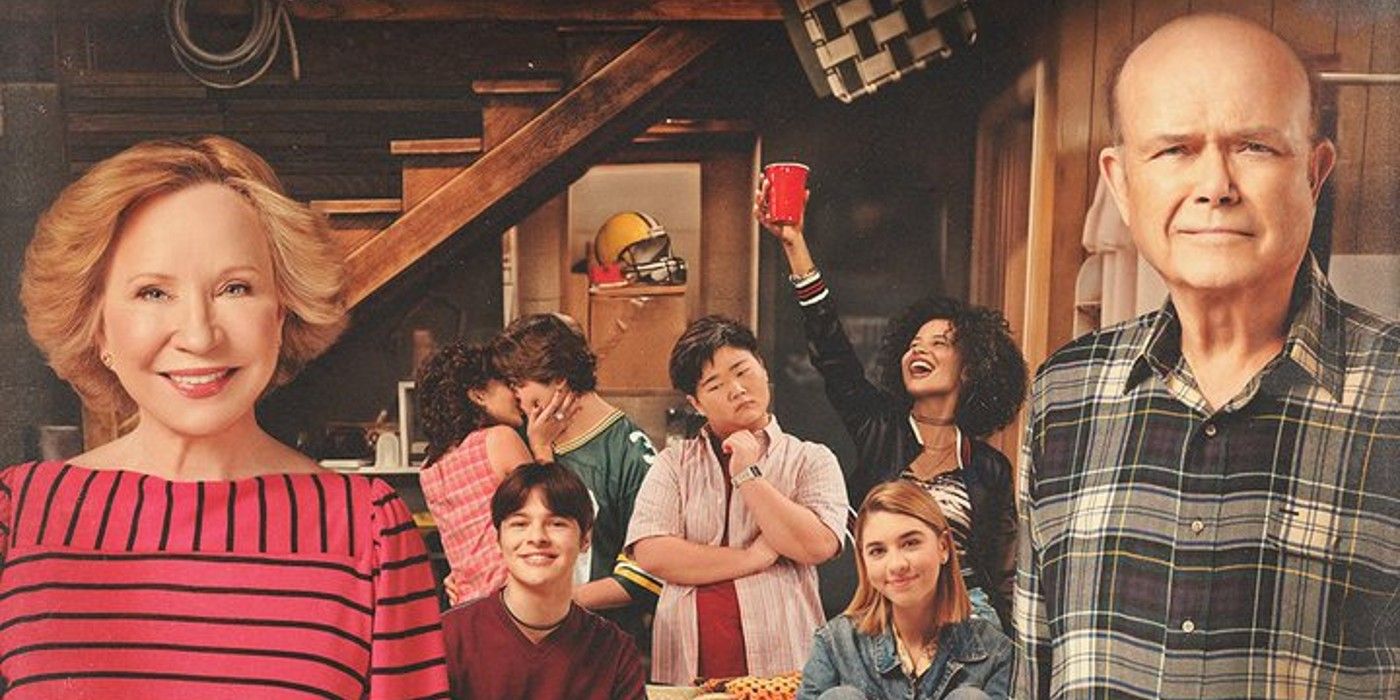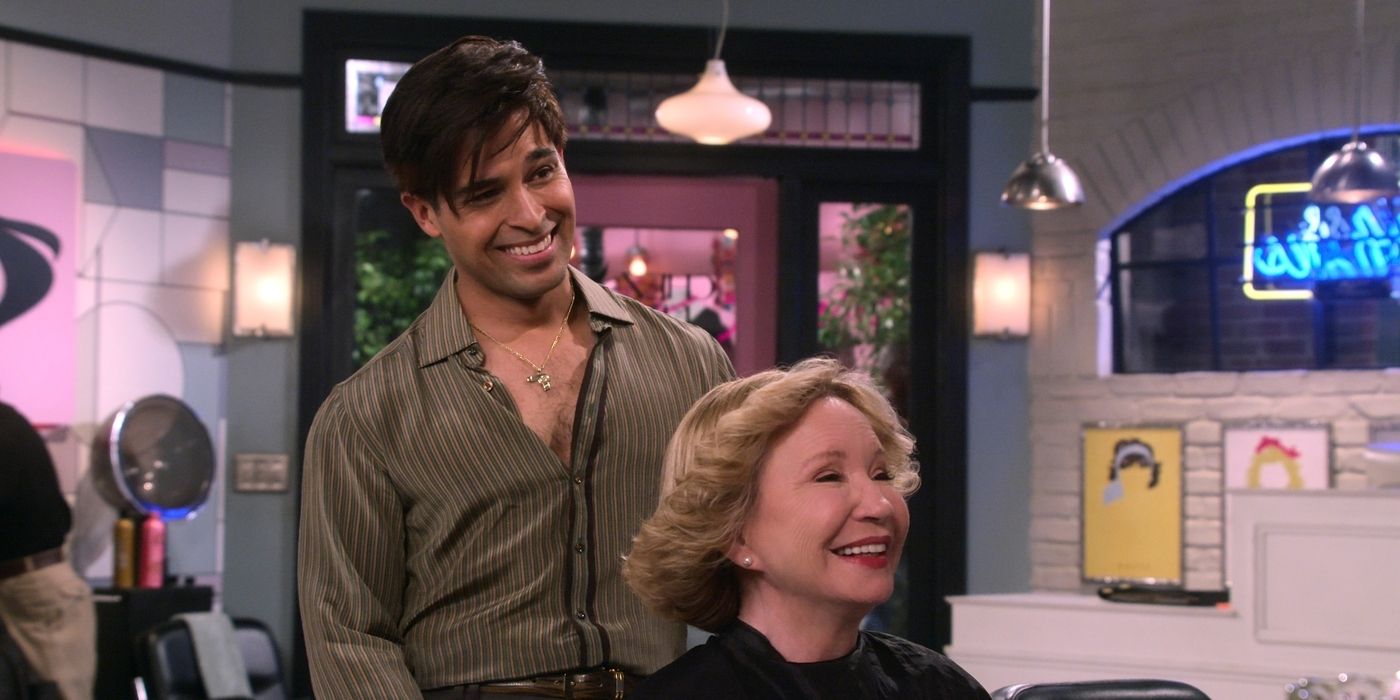That '90s Show, Netflix's sequel to That '70s Show, has been around for a couple of weeks, and people are already discussing their favorite things from each show. Although spin-offs have a hard time standing up on their own, That '90s Show is on a good path.
That '90s Show learned a lot from its '70s counterpart's mistakes and there are big differences between the series beyond just decades and cast. Someday, it might also come across as a product of its time but there's no doubt it does some things better than its prequel.
10 That '90s Show Includes More Racial Diversity
That '70s Show, like most sitcoms from the 2000s, didn't include many diverse characters. In this show, the only character that isn't white is Fez, and he's mostly a collage of immigrant stereotypes. The audience never even finds out his country of origin.
That '90s Show, on the other hand, made an effort to create a more diverse cast. While it's not nearly as inclusive as it could have been, at least That '90s Show has two Asian characters and a Black woman in starring roles. Today's audience is very aware of how important representation is in all kinds of media.
9 That '90s Show Has More Relatable Teenage Characters
While many people aren't happy that That '90s Show is aimed at a younger audience, there's no way to deny that the show is, ultimately, about teenagers. Whereas That '70s Show targeted adults, that series' teenagers didn't really act like teens.
The cast in That '90s Show is younger. The gang is played by actors between 13 and 18 years old, while in That '70s Show, most of the actors were between 18 and 22 years old in their first season. This means that the characters in That '90s Show actually look like teenagers and understand their roles more intimately.
8 That ‘90s Show Made Kitty A More Central Character
Kitty Forman, Eric's overly protective mother, is never much of a protagonist in That '70s Show as she is in That '90s Show. The original series focused more on a group of teenagers, and Kitty and Red were mostly the stereotypical parents of the series.
In That '90s Show, Kitty is the glue that keeps the new series as part of this universe. On top of that, the show gives her more screen time and storylines. Since Kitty is an all-time favorite, one of the best sitcom characters, this really helped the series from its start.
7 That '90s Show Looks At Sexual Identity In The '90s
That '90s Show features Ozzie, a gay character trying to get out of the closet at his own pace. While having a token gay character in a TV show isn't ideal, at least That '90s Show at least included LGBTQ+ representation among its main characters. The only queer character in That '70s Show was Buddy Morgan, and he only appeared in one episode because of a negative reaction from the audience.
It's good to know that the world has changed enough for queer characters to be important parts of popular TV shows. Hopefully, there will be more LGBTQ+ representation in later seasons of That '90s Show. People would love to get to know Ozzie's boyfriend, Etienne and see their relationship grow.
6 That ‘90s Show Created A Version Of Red That's Less Controversial
Although Red Foreman is a beloved sitcom character, he's also one of the most controversial dads on TV. In That '70s Show Red is a bitter man who constantly verbally abuses his son and treats his wife condescendingly. Even though the audience knows Red loves his family, he's hard to redeem.
However, in That '90s Show, they created a softer version of Red. He's still angry and more of a loner, but he isn't nearly as aggressive with the people around him. He still makes a couple of jokes about Eric being too delicate, but he's also nicer to the other kids.
5 That ‘90s Show Created Better Female Characters
As with many shows from the '90s and 2000s, some female characters in That '70s Show were questionable. At this time, there was a lot of internalized misogyny, as illustrated by characters like Donna, who criticized Jackie for being too feminine. Jackie is another problematic character because her presence serves primarily as a joke for the show. It's not until later seasons that Jackie gets any character development.
However, That '90s Show tried to create more complex and interesting female characters. First, the protagonist is a girl, which is already an improvement. On top of that, Gwen and Nikki are given storylines and genuine character arcs. Gwen and Leia's is also extremely wholesome, representing different kinds of relationships between girls and helping the franchise finally pass the Bechdel Test.
4 The Romances In That ‘90s Show Are Less Toxic
Even though Eric and Donna are one of TV's greatest couples, most romantic relationships in That '70s Show are problematic. Jackie and Kelso are always fighting, and Kelso tends to underestimate her. Even Red and Kitty aren't ideal since Red tends to condescend to his wife.
On the other hand, That '90s Show included more balanced couples, from Nate and Nikki, who accept each other as they are, to Ozzie and Etienne, who are into each other despite the distance, to Leia and Jay's cute if rocky romance. In addition to providing a wider variety of relationships, That '90s Show's relationships are definitely better.
3 That ‘90s Show Has A More Wholesome Sense Of Humor
Many fans of That '70s Show criticized this sequel because they missed the more sarcastic and darker humor from the previous series. However, That '90s Show is still funny without making uncomfortable jokes at the characters' expense.
For example, That '70s Show truly abused its stoner gags, milking them for all they were worth. While That '90s Show still included this iconic trope from the series, they've been careful not to place it at the show's center. Ultimately, jokes depend on people's tastes, but That '90s Show's humor may ultimately reach a wider audience.
2 The Gang in That '90s Show Has Less Irredeemable Characters
The original gang in That '70s Show has become some of the most emblematic characters on television. However, in retrospect, there are a lot of problematic issues with these characters. Most of them are incredibly mean, and they tend to be terrible friends with each other.
That '90s Show opted for a more wholesome group of friends. Although they still bicker with each other, they're also sweet, loyal, and understanding. It's safe to say that this sequel created better role models. Even Kitty and Red are less abrasive than they were in the original series.
1 That ‘90s Show Avoided Including Stereotypical Characters
One of the most common criticisms That '70s Show has received through the years is the problematic portrayal of Fez. This character's jokes usually revolve around the fact that he's an immigrant from an unnamed "exotic" country.
That '70s Show also makes fun Fez's accent and his confusion over most American social customs. That '90s Show manages to depict its characters in more interesting and appropriate ways instead of perpetuating stereotypes so it can gather low-hanging fruit.

